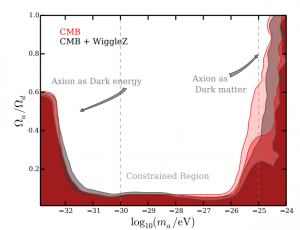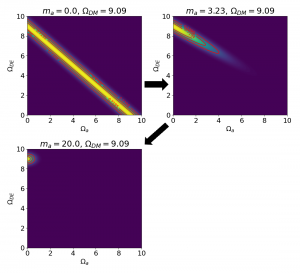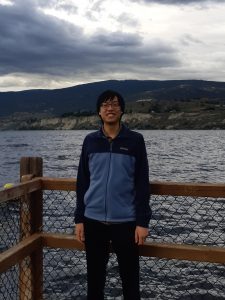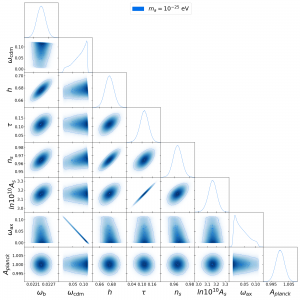Born and raised in Toronto, Ian just finished his final year of undergrad at U of T, graduating with an Astronomy and Physics Specialist and a Statistics Major. He worked with Dr. Keir Rogers on a project investigating dark matter as part of SURP this summer.
In his free time, Ian enjoys trivia, baseball, and board/video games. You might also find him wandering around Toronto while listening to music on long walks.
What made you decide to participate in SURP?
I really love doing research, and SURP is a great way for me to pursue that interest. While I’ve certainly enjoyed my astronomy and physics courses in undergrad, I’ve found research to be the most gratifying part of my university experience. Collaborating with other astronomers and learning about others’ work is even more exciting when it’s at the cutting edge of the field – and solving a tricky problem is all the more rewarding when you get to contribute to scientific discovery!
Can you tell us about your research project?
I worked with Dr. Keir Rogers on a project analyzing the distribution of ultra-light axions, which are a type of theoretical particle that cosmologists are interested in as a candidate for dark matter. Since these axions affect the cosmic microwave background radiation, we can place constraints on their distribution by comparing simulated CMB data for different values of the axion parameters to the observed CMB data.
Our work uses a new machine learning method called axionEmu, which is a neural network able to generate synthetic CMB data much faster (~10,000 times speedup!) than previous methods. Using axionEmu, we hope to derive constraints for the full axion distribution for the first time now that it’s become computationally feasible.
What is your favourite thing about SURP?
My favourite thing about SURP is the opportunity to learn from other researchers. Whether it’s structured events like the SURP seminars or final poster presentations, or more casual weekly updates from everyone in the research group about their work, it’s an incredible experience to be surrounded by so many astronomers with such a vast amount of expertise between them. In particular, I’m extremely grateful for all the support and guidance provided by my supervisor, Dr. Keir Rogers, throughout the summer – whether it be on the project itself, the presentations, or adjusting to academic life as a researcher.
Can you explain how SURP has been different from your undergrad work?
In an undergraduate degree, coursework is all about building up a base of technical knowledge in astronomy and physics – knowledge that has been established through the discoveries of countless researchers over hundreds of years. Doing research as part of SURP gives me an opportunity to be on the other side of that experience: to now use that knowledge to make my own contribution to the canon of astronomy and present it to the broader community.
What are your plans for the future?
I’m starting a master’s in Astronomy this fall at Western University. In the coming years, I hope to apply some of the knowledge, skills and experience that I gained through SURP in my master’s research!

Previously estimated contours of the ultra-light axion distribution in axion mass and density. Credit: Hložek et al (2015).

Demonstrating how constraints on axion and dark matter density change as axion mass increases. An animated version is here. Credit: Ian Chow.
The Dunlap Institute for Astronomy and Astrophysics at the University of Toronto is an endowed research institute with over 80 faculty, postdocs, students, and staff, dedicated to innovative technology, ground-breaking research, world-class training, and public engagement.
The research themes of its faculty and Dunlap Fellows span the Universe and include: optical, infrared and radio instrumentation, Dark Energy, large-scale structure, the Cosmic Microwave Background, the interstellar medium, galaxy evolution, cosmic magnetism, and time-domain science.
The Dunlap Institute, the David A. Dunlap of Astronomy and Astrophysics, and other researchers across the University of Toronto’s three campuses together comprise the leading concentration of astronomers in Canada, at the leading research university in the country.
The Dunlap Institute is committed to making its science, training, and public outreach activities productive and enjoyable for everyone of all backgrounds and identities.


